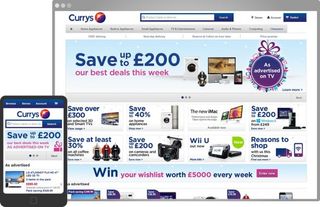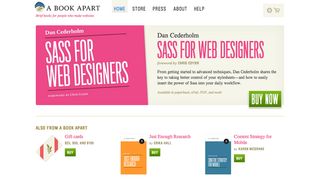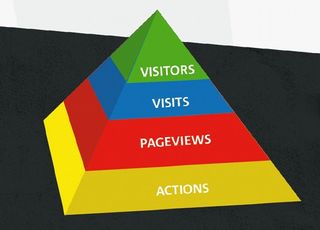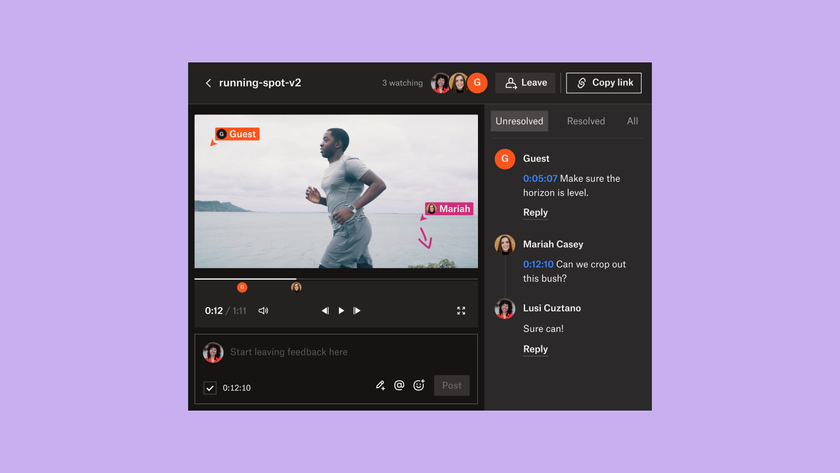10 things to consider when designing a business website
Juan Lobato, CEO of BaseKit, suggests 10 fundamental requirements for a successful business website.

Creating a business website can be a daunting, often drawn-out task. The 10 steps I'll outline here cover the key points you should be thinking about when creating working with your clients in order to really meet the needs of their business.
With these tips in mind, you should be able to create a good-looking website that not only meets the demands of your clients, but goes above and beyond their expectations.
01. What does the company stand for?

Many businesses often think of design as the first challenge when creating a website. But to decide upon the look and feel of the brand, you first need to be clear about what the business stands for. Only then you can you move towards deciding how best to communicate this.
Once everyone is clear on what the brand values of the business are, the design of the website will come naturally. But if your client doesn't seem to know, or is unwilling even to discuss the matter, it may be time to consider either pushing back or walking away.
02. Content
It's become a cliche, but only because it's true: it really is critical that the content you present is relevant, engaging, and shareable.
Good content will help your client in a multitude of ways - driving traffic to its site, improving its search ranking, improving PR. Yet many businesses often neglect the creation and maintenance of quality content for their site.
So in initial meetings, if your client says something like "Oh, design the site first and we'll think about what content to put on it later", they're going about it the wrong way. Push-back time again.
03. Mobile

In 2014, making sure the website works well on mobile - whether that's through responsive design or a bespoke mobile site - is crucial.
A recent study conducted by Google found that 72 per cent of mobile users say it’s important to them that websites are mobile-friendly, yet 96 per cent have visited a site that doesn’t work well on their device. That's a lot of customers that your client could be missing out on, so think mobile first and you won't go far wrong.
04. Essential information
If you're designing a website for a small business operating on the high street, an independent coffee shop for example, it's imperative that essential information users need - phone number, map, directions - is easily accessible on the site (especially on a mobile site). This might sound obvious, but a shocking number of business websites either lack important information or make it difficult to find.
05. The backend
If a site goes down during a sale, or if customers cannot order the product they want at the price they demand, it can have a huge impact on the bottom line. Consumers are not forgiving, and one slip up is all that is required for a loss of business.
A solid backend infrastructure is something that small businesses often consider as an afterthought - but it can be disastrous should the website fail to load at a business critical moment.
06. Simplicity

It only takes a split second for a consumer to make up their mind about a product. One bad experience and a snap decision will be made; they don’t like it, and they won't use it again. So you must be sure to keep the end user in mind at all times. Although exciting, dazzling websites may be what the client thinks they want, simplicity will probably go further towards actually meeting their business needs.
Think about what will encourage the user to navigate around the site, and ultimately make the purchase. That will almost always lead you to reduce clutter and simplify the site.
07. Security

If the website is taking credit card details, processing payments or even holding onto customer data, security needs to be your best friend. PCI DSS compliance is just one of the compulsory regulations your client need to be able to prove adherence too - unless they fancy crippling fines. More generally, follow these security tips to protect your website from hackers.
08. Make payment easy
Ecommerce is fast becoming the standard form of commerce with online shopping no longer the outlier it once was. Sites like ASOS and Amazon, with free delivery/returns and ‘one click’ payment methods, have brought ecommerce into the mainstream, but their efficiency and professionalism means customers now expect the same high standards on all ecommerce sites. These tips for building ecommerce sites will help you meet those expectations.
09. Calls to action and lead generation
Too many websites give away interesting information and content for free, without even as much as asking for an email from a user. Small businesses, especially, need to do all they can to generate leads and initiate a response from their audience.
Using short forms (or one-question polls, to gather data from a user before giving them content) are a great way for businesses to build up a user (and potential customer) profile from the website.
10. Analytics/SEO

Once a business has launched its website, the work doesn’t stop. Ongoing analysis is critical for a business, as it allows you to see what is working to achieve the business goals.
Are the calls to action providing the data needed? Is the SEO driving the right users to the site? If not, analytics will give you the tools to change this and improve the performance of the website. The free Google Analytics tool is a good start - follow the guide here.
Words: Juan Lobato
Juan Lobato is CEO of leading website building platform Basekit.
Liked this? Read these!
- Inspiring ecommerce website designs
- How to build an app: try these great tutorials
- Our favourite web fonts - and they don't cost a penny

Thank you for reading 5 articles this month* Join now for unlimited access
Enjoy your first month for just £1 / $1 / €1
*Read 5 free articles per month without a subscription

Join now for unlimited access
Try first month for just £1 / $1 / €1
Get the Creative Bloq Newsletter
Daily design news, reviews, how-tos and more, as picked by the editors.
The Creative Bloq team is made up of a group of design fans, and has changed and evolved since Creative Bloq began back in 2012. The current website team consists of eight full-time members of staff: Editor Georgia Coggan, Deputy Editor Rosie Hilder, Ecommerce Editor Beren Neale, Senior News Editor Daniel Piper, Editor, Digital Art and 3D Ian Dean, Tech Reviews Editor Erlingur Einarsson and Ecommerce Writer Beth Nicholls and Staff Writer Natalie Fear, as well as a roster of freelancers from around the world. The 3D World and ImagineFX magazine teams also pitch in, ensuring that content from 3D World and ImagineFX is represented on Creative Bloq.












